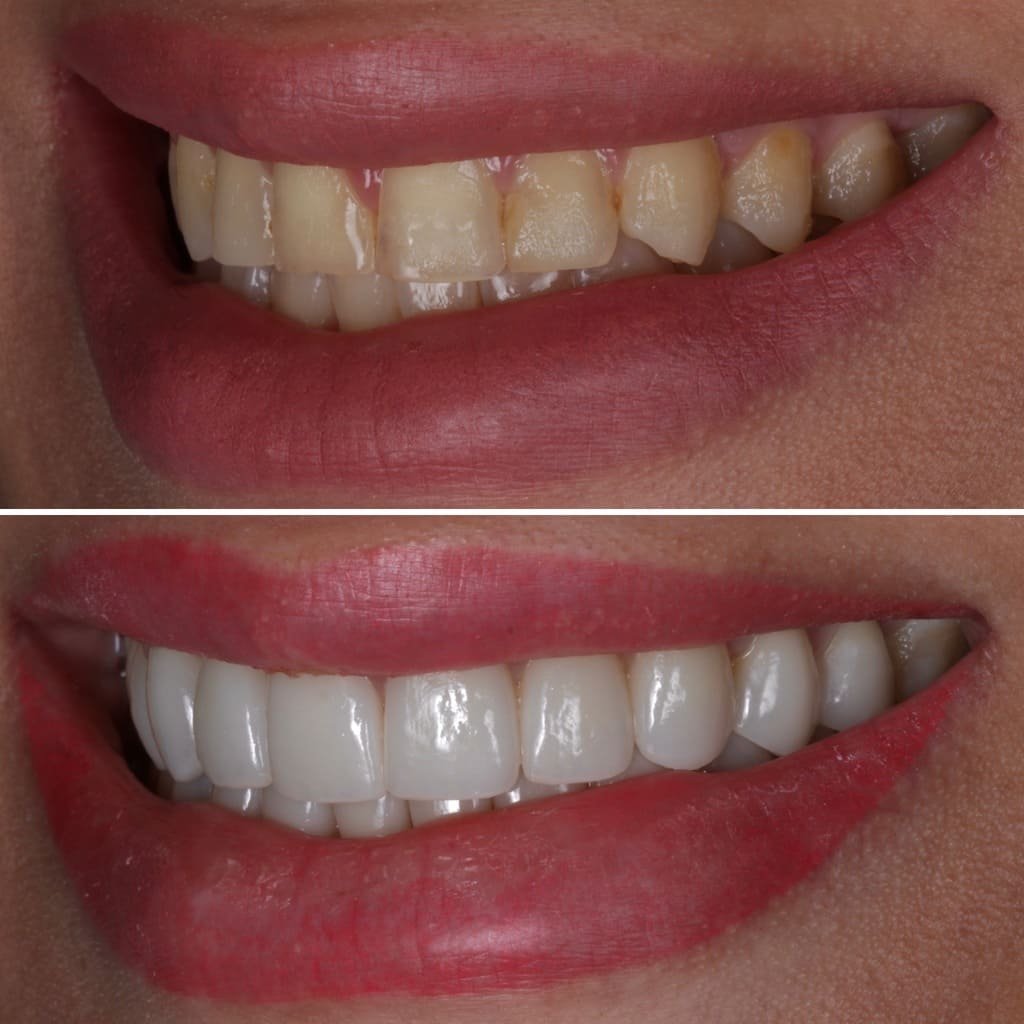Dental veneers have gained popularity for their transformative power. These wafer-thin, custom-made shells designed to cover the front surface of teeth can enhance your smile in ways you might not have thought possible. However, as with most things in life, not all veneers are created equal. The quality of your veneers depends on several factors, such as the materials used, the adaptation and fit, the sensitivity of the bonding process, and, importantly, the aesthetic finish. Understanding these variables can help you appreciate why some veneers stand out for their excellence, while others may fall short.
Quality of Materials
When it comes to veneers, the choice of material is crucial. Common materials include composite resin and porcelain, but even within these categories, there are variations in quality. Higher-end materials like medical-grade porcelain offer better durability, stain resistance, and a more natural appearance. However, the type of material is just the starting point; how the material is manipulated during the veneer-making process also affects the outcome.
Importance of Good Adaptation and Fit
A veneer’s fit can make or break its effectiveness and longevity. An ill-fitting veneer can lead to a range of complications, from gum inflammation to bacterial build-up and bad breath. The importance of a perfect fit cannot be overstated, and it’s where the skill of the dental professional shines. Precise measurements and a keen understanding of your dental anatomy are essential for a veneer that fits like a glove.
The Importance of Professional Expertise
When considering veneers, it’s crucial to consult with a dental crowns specialist or crown specialist who has the experience and skill necessary to deliver excellent results. At Transcend Dentistry, our dental veneers specialists utilize advanced techniques and high-quality materials to ensure that your veneers not only look great but are also durable and functional.
The expertise of the crown specialist ensures that the veneers blend seamlessly with your natural teeth, providing an aesthetic, natural appearance.
Technique Sensitivity in Bonding
The process of bonding the veneer to your natural tooth is not as straightforward as it may seem. It’s a technique-sensitive procedure that involves multiple steps: preparing the tooth surface, applying a bonding agent, positioning the veneer, and finally, curing the bond. Each of these steps must be executed flawlessly to ensure a strong, lasting bond. If any part of this process is compromised, it can affect the veneer’s durability and even its appearance.
The Aesthetic Element
Veneers are not just about correcting dental imperfections; they’re also about achieving a desired aesthetic outcome. A well-designed veneer should blend seamlessly with your natural teeth, matching their shape, size, and color. Achieving this level of natural aesthetic requires a meticulous eye for detail and an in-depth understanding of dental aesthetics. It’s not merely a clinical procedure but an artistic endeavor.
Common Concerns: Why Do My Veneers Look Fake?
A common concern for patients is whether veneers will look natural. One of the main reasons veneers may appear fake is the veneers material used, as well as the fit and shade selection. It’s important to choose a skilled professional who understands the nuances of dental aesthetics, including veneer shade selection and proper tooth preparation.
At Transcend Dentistry, we use only high-quality materials and customize the shade to ensure that your veneers look as natural as possible.
Why It’s Worth Investing in the Best Veneers
Investing in high-quality veneers is essential for long-term satisfaction with your smile. While cheaper alternatives may seem tempting, they often fail to provide the same aesthetic quality and durability as premium veneers material.
At Transcend Dentistry, we understand the importance of both function and beauty, which is why we offer the best materials and the expertise of our dental crowns specialists to craft veneers that complement your natural features and last for many years.
FAQ about Veneers
Which Veneer Looks Most Natural?
Porcelain veneers are typically the most natural-looking option because porcelain mimics the light-reflecting properties of natural teeth. The 1M1 tooth shade is commonly selected for a balanced, natural look that blends seamlessly with your existing teeth. The crown specialist at Transcend Dentistry will work with you to select the best shade for your smile.
Do Veneers Hurt?
No, getting veneers is not a painful procedure. Veneers are usually applied after your teeth are prepared, and local anesthesia is used to numb the area. While there may be some mild discomfort after the procedure, it is typically minimal and resolves quickly.
Are All Veneers the Same?
Not all veneers are the same. Veneers come in different materials, such as composite resin or porcelain, with porcelain often being the preferred choice due to its natural appearance and durability. Additionally, the way veneers are crafted and fitted can vary depending on the expertise of the dentist.
Can You Get Veneers on Only Certain Teeth?
Yes, you can choose to place veneers on only specific teeth. Many patients opt for veneers on their front teeth to enhance their smile, while leaving the back teeth untreated. A veneers consultation with a dental crowns specialist will help you decide which teeth would benefit most from veneers based on your goals and the condition of your teeth.
Conclusion
In the realm of dental veneers, the adage “you get what you pay for” often holds true. High-quality materials, a perfect fit, a meticulous bonding process, and superior aesthetics are the hallmarks of a premium-quality veneer. While it might be tempting to opt for quicker or cheaper alternatives, understanding these critical variables will make it clear why investing in quality is the wiser decision for your long-term dental health and appearance. After all, your smile is one of your most important assets; it’s worth giving it the best care possible.

